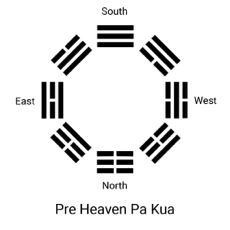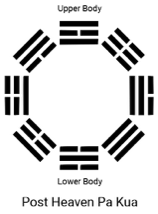The Unfamiliar
An original understanding
Most of I Ching's text is written with metaphors, and this makes it very difficult to interpret it in a comprehensible way. And there are several reasons for this:
• I Ching is not only a divination book. It is also (and perhaps more) an inner alchemy practices guide, a meditation manual. But no edition until now interprets the I Ching as a text of inner practices in a way that really makes sense. But it is normal that we lack until now such an interpretation, as the world has only become recently familiar with chinese inner alchemy, practices that some decades ago were totally unknown or secret, and not only for the West. Thus, until now most I Ching translators were not familiar with Taoist inner practices, which means that they were trying to translate something they had no understanding of. The few of them that were familiar with Taoist alchemy, whenever they correlate inner practices with the text, they do it only in a vague and abstract way.
For example hexagram 63 where the trigrams that constitute it are Li below, Kan above states in its 5th line: The eastern neighbour's cow sacrifice, is inferior to the western neighbour's little offering. Receives true blessing. All I Ching editions translate this line as talking about enemies in the west and the east, and that the western neighbour receives the blessing. But the truth is that it refers to the completion of a taoist inner alchemy meditation called Reverse of (trigrams) Kan and Li. Ιn this text, eastern neighbour is the trigram Li which represents East in the pre heaven Pa Kua, and as a yang trigram is expansive or offering much. The western neighbour is the trigram Kan, which represents West in the pre heaven Pa Kua, and being a yin trigram means that its energy is not moving outward, thus it offers little comparing to Li. In the post heaven (or alchemical) Pa Kua, Kan symbolises a quality of energy in the lower body, while Li a quality of energy in the upper body. These have to be reversed during the meditation.
So as hexagram 63 describes, Li's offering is below Kan's after the successfull completion of the meditation. The person who does the meditation or asks the question, is the one who receives all the blessing, not the western neighbour. In ancient chinese there were no punctuation marks.
• Scholars from other traditions that left their irrelevant influence on it, making it thus even more difficult to interpret properly, with most important been the Ten Wings commentaries ascribed to Confucius.
• The wrong sequence of the hexagrams. The known linear sequence numbered from 1 to 64, lack any energetic approach based on yin and yang, the trigrams, or the pa kua.
• It is written in chinese. And it is very very hard to interpret inner alchemy written with metaphors in chinese…
Verification
Among the plethora of I Ching editions, it is expected that this approach will be confronted with scepticism as concerns its fidelity of translation. Thus, iching.cloud's intrepretation goes (as all translations should) through various ways of verification:
1. The title of each hexagram should have a clear connection to its judgement.
2. The meaning of the judgement of the hexagram should also have a clear relation to the meaning of each of the six lines, and therefore by the first rule the lines should also have a direct relation to the title of the hexagram.
3. The meaning of each of the six lines should match the corresponding attribute of its position.
4. The meaning of each of the six lines should be related to the future hexagram to which it leads.
5. The meaning of each hexagram must clearly match the part of the corresponded inner practice it refers to.
The observance of these rules is an obligatory precondition for the exact interpretation of the original I Ching text. The correct interpretation is of great importance as the I Ching is not only a divination guide but also the most impartial, plus it is not only the most ancient inner alchemy book but also the most complete.



